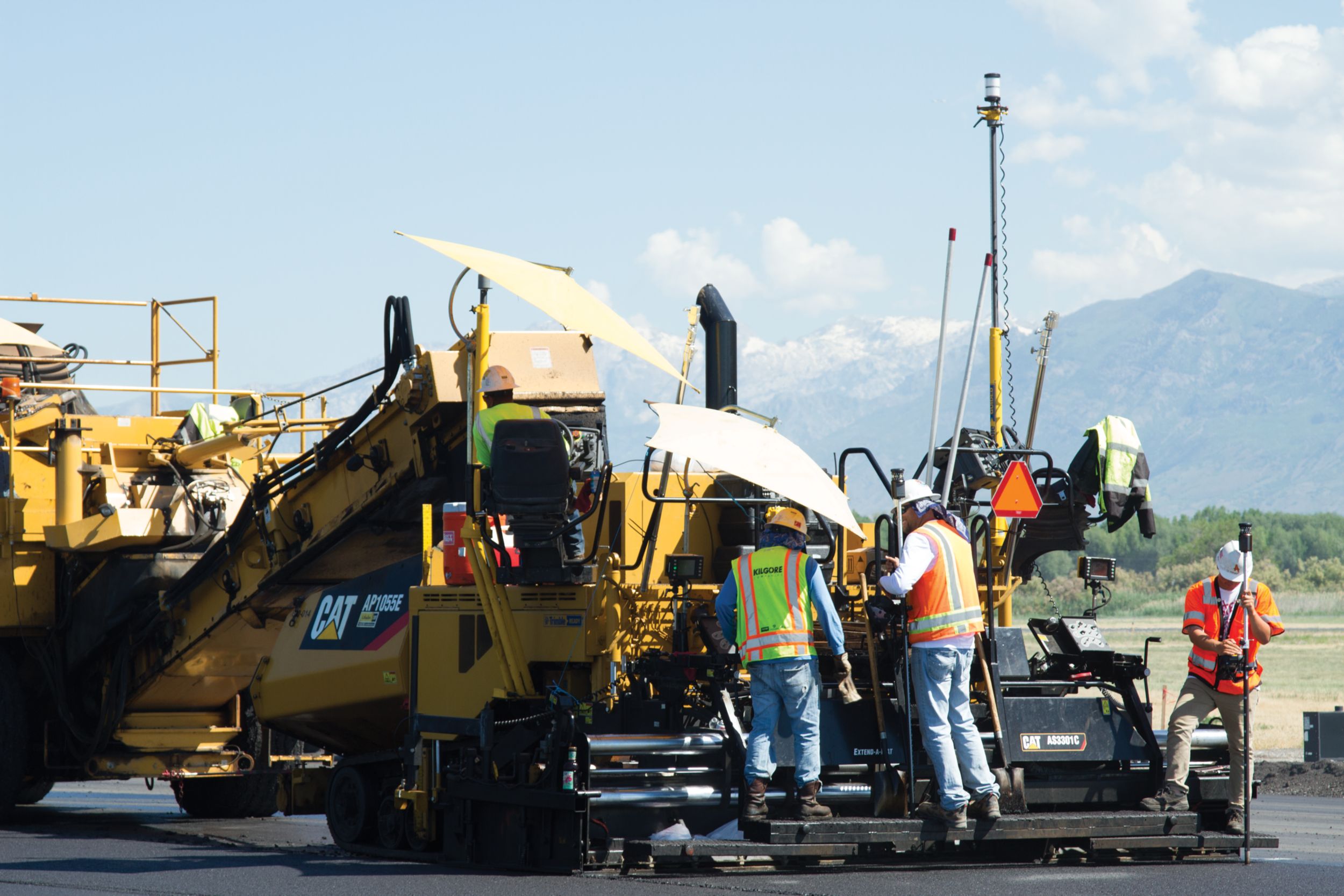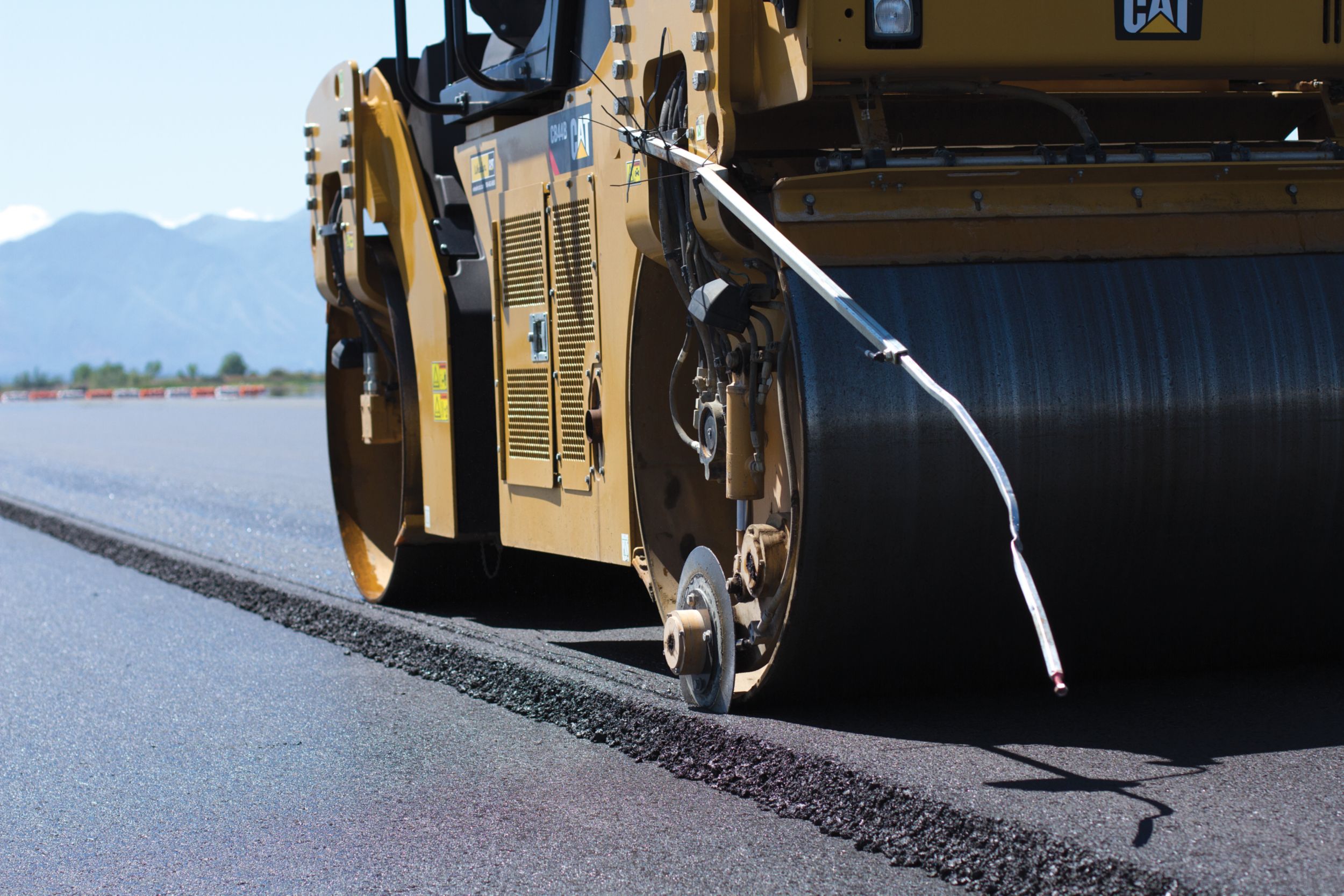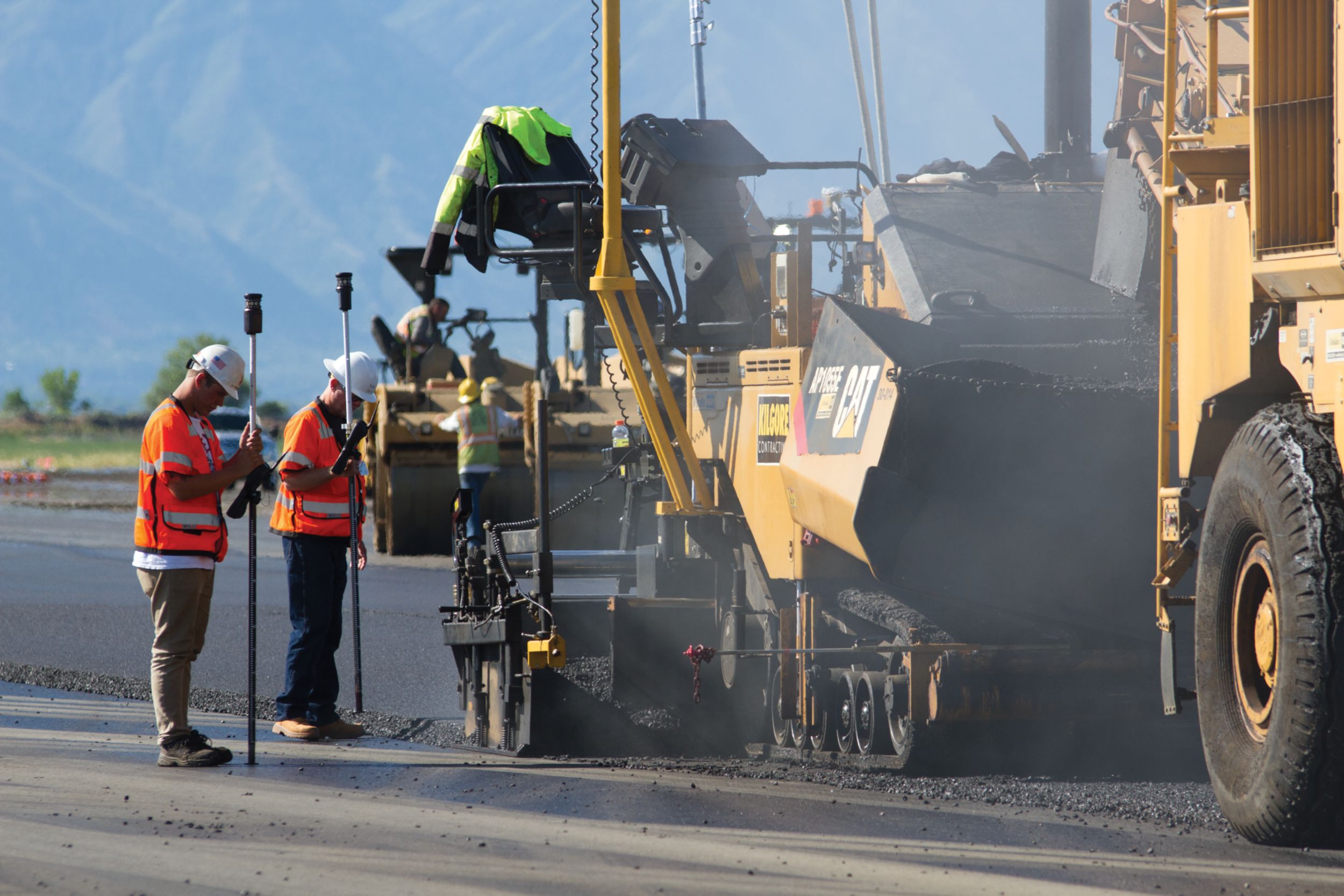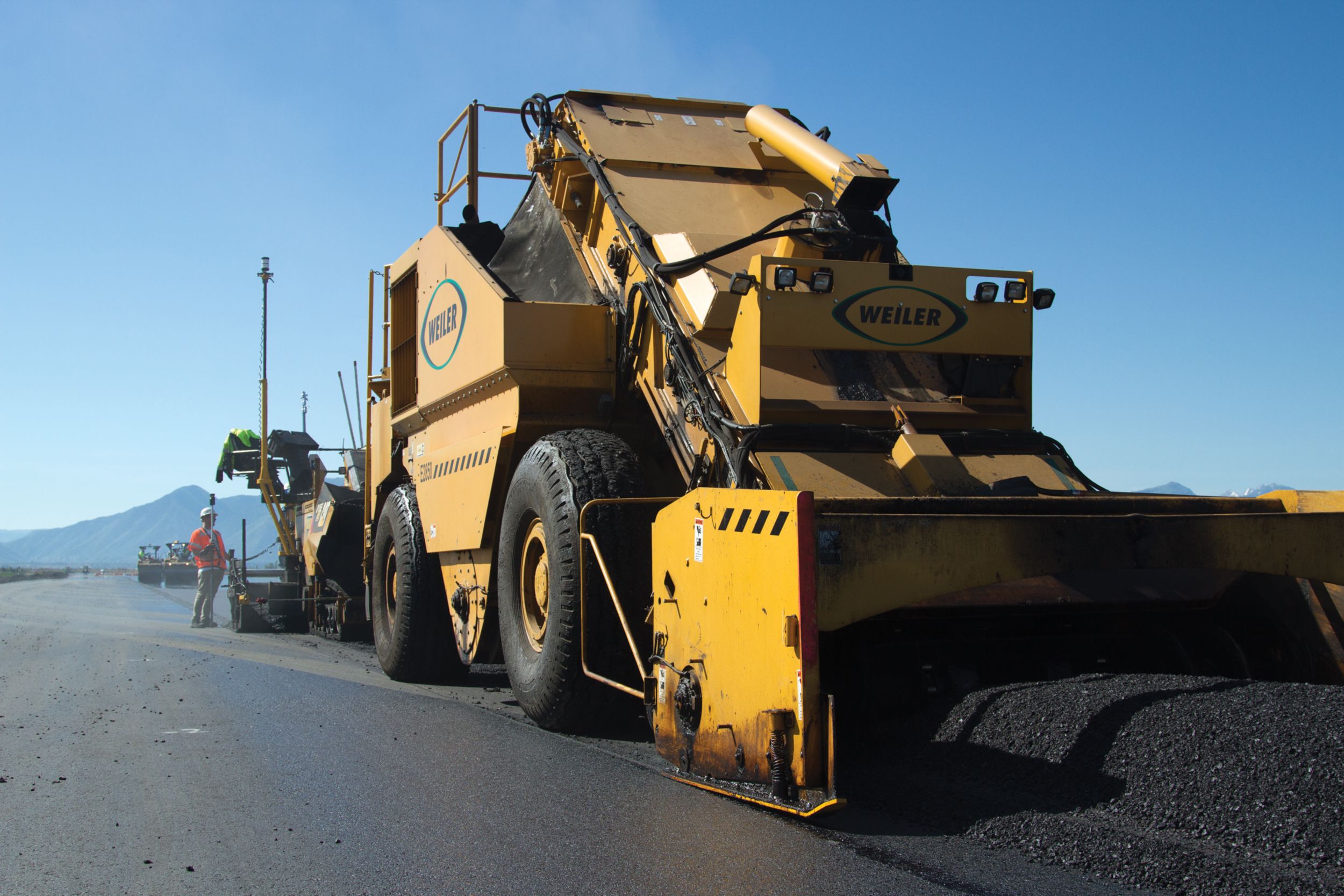3D PAVING HELPS OVERCOME CHALLENGES ON RUNWAY RESURFACING
When Kilgore Contracting, headquartered in Salt Lake City, Utah won the bid to replace a runway at the Provo Utah Municipal Airport, the project appeared to be a routine runway resurfacing—but it held a surprise that made the project far more complex.
Specifications for the 45.7 m (150 ft) wide, 2,621 m (8,600 ft) long runway called for full-depth removal of the old runway, placing a 38 mm (1.5 in) leveling course and topping it with two 76 mm (3 in) surface lifts. Unexpectedly, installation of the leveling course resulted in some hidden problems.
Unexpected Challenge
Built in the 1940’s, runway 13/31 at the Provo municipal airport was in pretty bad shape. With severe, widespread cracking and no resurfacing in more than 20 years, the runway surface was badly deteriorated. Furthermore, years of winter frosts had settled the ground below creating many high and low spots in its elevation.
When Kilgore milled 178 mm (7 in) of worn asphalt off the old runway, even larger elevation variations below the surface confirmed that the leveling course was going to be far more challenging than anticipated.
A 3D Solution
To begin, Kilgore had to add varying amounts of 19 mm (0.75 in) aggregate fill to restore the grade along the runway’s entire length. Instead of the anticipated uniform 38 mm (1.5 in) leveling course described in the site plan, the leveling course actually varied from 76 mm (3 in) to 305 mm (12 in) under the entire runway. It resembled a complex, variable-depth paving job, according to Kilgore’s project superintendent Dave Warner.






